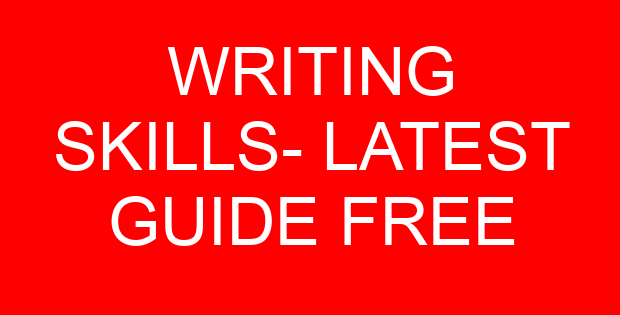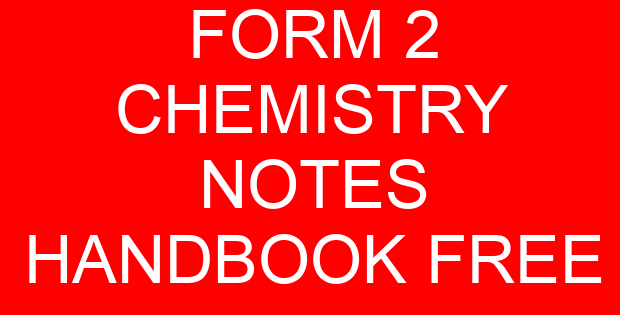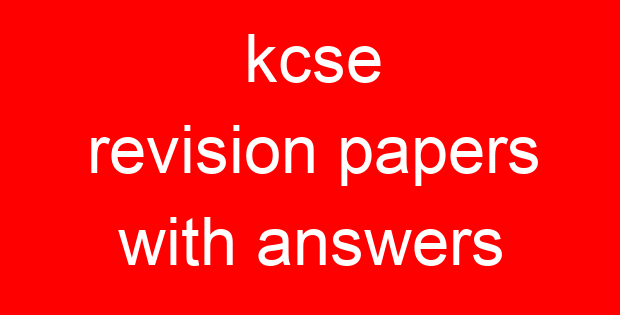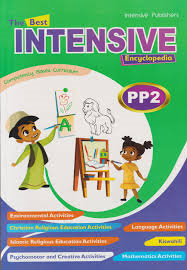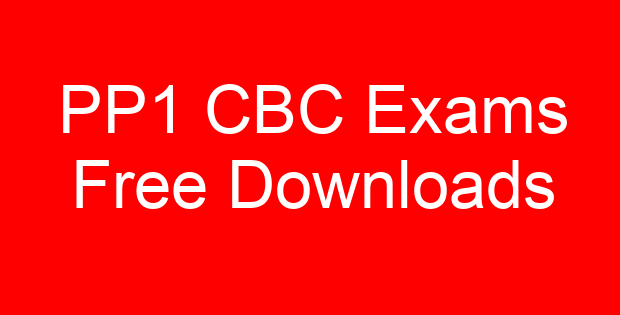WRITING SKILLS
4.1Introductions
In this section, we are going to look at writing as an important skill in the communication process. Principally, we shall define writing and its importance in communication, discuss the paragraph as a key Component in writing, then how to plan your essay and finally discuss the various types of essays that you will need to use in your writing.
At the end of this topic, you should be able to:
- Define writing and explain its importance in communication
- Discuss the characteristics of a paragraph as an important component of writing
- Plan an academic essay
- Identify and explain the various types of essays
- Demonstrate understanding of referencing and documentation techniques in academic writing
4.3 Definition and importance of writing
Writing is expression of language in form of symbols (letters, words and sentences) on a surface. The primary purpose of writing is communication. Writing is a life-long skill that when used clearly can help you express ideas convincingly to others and can determine your success at the university and professional life. Writing takes different forms. It may be in the form of a single paragraph, an essay, a short paper, a report, a letter, a memo e.t.c.
Whatever the form of writing, effective writing involves the proper use of words, sentences, punctuations and paragraphs to pass across messages. In most of the writing you will engage in at the university, the paragraph constitutes a very important building block. It is in this regard that we shall turn to this unit of writing in the next section.
4.3.1 Paragraph writing
Paragraphs are important building blocks in the writing of essays. A paragraph usually contains one main idea captured in a sentence, with about four to eight supporting sentences which expand the main idea by giving explanation, details and/or examples to support the main idea of the paragraph. The length of a paragraph may vary from one form of writing to another or by the idea one is expounding on. A paragraph can be part of a longer piece of writing, as it is in an essay, or it can stand alone as in an exam answer.
Writing a paragraph is not a natural skill, but learned skill. A paragraph is unified by a single main idea. There is no one correct structure of writing a paragraph, however, a useful structure to have in mind is that it should have three main components, namely:
- Topic/thesis Sentence: this is the first sentence and it expresses the main idea that unifies the paragraph.
- Supporting Sentences: these sentences present details, facts and examples that expand on or illustrate the main idea.
- Concluding Sentence: these sums up the paragraph’s main idea or what has been said. Alternatively, it draws a logical conclusion from the main idea.
A good paragraph therefore must’ reveal its main idea in a prominent statement called topic/thesis sentence. The prominent idea is usually presented at the beginning of the paragraph such that other statements that follow support the main idea,
A paragraph must convey thoughts that are connected together by logical associations and signal words, that is, there must be a clear connection between the sentences which constitute a paragraph. Signal words or transitional phrases that indicate connection between sentences include connectors of various kinds, such as:
- Connectors of sequence: afterward, as soon as, before, first, second…, finally, later, next etc, as well as, firstly, next, then, finally, so thus, as a result, because, therefore, for example, for instance, in contrast, on the other hand
- Connectors of addition: also, and, another, besides, furthermore, moreover, likewise etc
- Connectors of contrast: but, even if, even so, however, despite, instead, nevertheless, on the contrary, on the other hand etc
- Connectors of result: as a result, consequently, accordingly, therefore, hence, thus etc
- Connectors of illustration: for example, for instance, for this reason, that is etc.
A good paragraph must match real division of your ideas, that is, a paragraph must be about one idea such that the start of new paragraph should signal a shift to a new idea.
Essay writing constitutes an important writing skill at the university level, where most of the research and term papers, as well as exam questions are written in essay form.
- Essay writing
An essay is a piece of writing on a single subject, issue or event with more than one paragraph, which is meant to communicate something. The length of an essay varies, where short ones may be 300 to 600 words long, constituting of four or five paragraphs. The paragraphs of an essay should be logically connected using transitional ;words and phrases as those connecting sentences within the paragraph as outlined above.
An essay has three necessary parts: an introduction, a body and a conclusion.
- The introduction states the main point or thesis of the essay and may be a single or just a few paragraphs.
- The body supports by showing, explaining, proving the main point or advancing an argument. It generally has at least three paragraphs, each containing facts and details that develop the main point.
- The conclusion reminds the reader of the main point by summarizing and reinforcing the support in the body paragraphs, or it may make an observation based on that support and present the writer’s last thoughts on the subject.
- Planning the essay
The following six methods/stages can help you order your material in readiness for essay writing:
Stage 1: Write down your purpose
It is a good idea to write down (in a sentence or two) exactly what you are trying to achieve through your essay. This helps you organize your material around this purpose without straying away from the point.
Stage 2: Assemble the information
Using notes on paper, index cards or notes on your PC, jot down all the ideas or points you may want to make.
At this stage, you need to select only the essential, relevant information. Ask questions like; Is this really relevant to my message? Does my audience really need to have this information in order to understand my message? Will this information help me achieve my purpose?
Stage 3: Group the information
At this stage, you should consider your list and look for links between the bits of information. Rewrite your notes in clear notes, preferably under clear headings. These could become the paragraphs or sections of your completed message. Remember all paragraphs should carry one main idea. All other material in the paragraph will be supporting evidence – examples, elaboration, illustrations etc.
Stage 4: Put the information into logical sequence
This stage requires you to put the groups of information (still only in note-form) into some sort of sensible order.
You can employ any of the following methods to order your material:
- a) Chronological order – it is sometimes called historical order and is perhaps the most common method. It presents the material in the order in which it occurred or occurs in time;
- Spatial (or place) order-facts are presented on a geographical basis – from place to place, from north to south, top to bottom, left to right, high to low, in and out, up and down or near to far. This method is effective for describing machinery, buildings, furniture, or geographical location.
- Order of importance – this presents material either in descending order of importance (deductive order): starting with the most important point to gain the reader’s attention; or in ascending order (inductive order): starting with the least important point.
- Ascending order of complexity – simpler ideas first, followed by increasingly difficult or complex material.
- Descending order of familiarity – moving ‘from the known to the unknown’.
- Cause and effect-put simply it means, “because of this, then that”. That is, “because this happened,that happened”.
- Topical – this requires that you deal with the material on a topic-by-topic basis. This is especially useful when there appears to be no real link between the chunks of material you have.
Stage 5: Produce a skeleton outline
This involves the production of a clear plan, which becomes increasingly easier by working through the previous four stages carefully. An outline makes the job of writing and presenting your work easier.
Stage 6: Write the first draft
Now you are ready to start writing. At this stage, do not worry about style and words. Just place the different chunks on information in their place: introduction, the main body and the conclusion.
Stage 7; Edit the rough draft and write the final draft
This stage requires you to put yourself in the shoes of your receiver. Read the rough draft through their eyes, checking for ambiguities, errors, awkward expressions, lack of signpost words (first, second, finally, in addition, on the other hand etc), which are essential to guide your reader along the route of your ideas. Above all, aim for a concise, easily understood style.
- Vary the length of the sentences but keep them on the shorter side: 18-22 words should be the
average - Paragraphs should have only one main idea
- Use words that the reader will understand – avoid unnecessary jargon
- Avoid unbusiness-like colloquialisms such as “to cut the long story short”
- Omit unnecessary words for example, “serious” in “serious crisis”
- Use the shorter rather than the longer word or phrase, for example, “start” rather than
“commence”
- Avoid hackneyed expressions (cliches such as “please find enclosed”, “if I can be of further
assistance”, “please do not hesitate to contact me”) - Avoid needless repetitions of words and phrases -find alternatives wherever possible
- Use sincere words – do not overstate or exaggerate
- Use positive words rather than negative word if possible
- Use the active rather than the passive voice
5 WRITING EFFECTIVE ESSAY EXAMS
- Introduction
In this section we shall examine the various strategies that can be used in taking and writing exam answers, /ou should find the tips on how to tackle exams provided here invaluable to your success in your academic ife at the university, because passing exams constitute a core requirement in the university progression and graduation.
- Objectives of the topic
At the end of this topic, you should be able to:
- Apply tips that are invaluable in writing exams.
- Demonstrate understanding of what writing strategies key verbs used in essay questions require of a student.
- Tips for writing essay answers
- Preview the exam and choose the questions to answer.
- Plan yourtime according to the worth of the questions
- Start with the easiest question because you get a psychological boost if you are able to successfullyaccomplish a task and therefore you would be motivated to tackle more difficult questions.
- When stalled for an answer, move on to another question or take a quick break.
- Keep your exam time until the last possible moment.
5.4 Writing complete essay exam answers
Before writing an exam answer, read the entire question. To answer essay questions completely, you need o follow directions, organize and provide adequate support. You usually need to supply a definition or explanation, to compare or contrast, classify, formulate a persuasive argument, or apply other writing strategies. You are expected to cite significant points and explain-connections clearly. Quality and clarity re more valued than quantity.
In answering essay questions effectively, you need to know the precise meanings of certain verb:
commonly used in exams. They provide clues to the writing strategy that will best organize an essa*,
answer.
5.5 Definition of Common Verbs in Essay Questions
Account for: to explain, as a cause and its effect; to justify
Analyze: to examine the parts of and determine their .connections
Clarify: to explain; to present details, reasons or examples
Defend, justify or support:: to give reasons for; to offer evidence
Define: to give the meaning; to describe basic characteristics
Discuss: to examine and consider; to present details and reasons
Evaluate: to examine advantages and disadvantages; rate or judge
Identify: to define; to give the characteristics of
Trace: to track or explain in chronological order
5.6 Essay Writing strategies suggested by key phrases
| Key Phrases | Writing Strategies |
| · Trace, give the history of | o Narration |
| · Provide details, describe | o Description |
| · Explain, list, provide examples | o Illustration |
| · Discuss or analyze the parts of | o Division-classification |
| · Analyze, explain how; show how | o Process analysis |
| · Discuss advantages/disadvantages | o Comparison-contrast |
| · Show similarities/differences | o Comparison-contrast |
| · Account for, analyze the results of | o Cause-effect |
| · Discuss or explain reasons for | o Cause-effect |
| · Identify, clarify, explain the term | o Definition |
| · Defend, evaluate, justify, support | o Argument-persuasion |
5.7 Types of Essays
There are various types of essays, which can be classified according to the purpose for which they are written as discussed below.
5.7.1 Descriptive Essays.
Effective descriptive essays create word pictures of objects, persons, scenes, events or situations, in creating images it is important to create sensory impression. Sensory impressions are created by use of words that appeal to our senses of sight, hearing, smell, touch and taste. Descriptive writing in general, can appear on its own or as part of some other form of writing, for instance, in writing history, biography, fiction, poetry, journalistic cases, advertisement e.t.c.
5.7.1.1 Characteristics of effective description
- a) They employ precise sensory impression, which capture the features that they describe, with appropriate words by likening the objects they describe with images and things that the reader can easily recognize.
- b) Effective descriptions take a vantage point, that is, they do not present every detail observed-, but select, what details to include or exclude. They also describe objects-starting from one point to the other e.g. from bottom up, left to right’or vice versa, front to back, general to specific, inside out, and so on.
5.7.2 Narrative Essays
Narration is a process of relating events that occurred where they occurred, when they occurred and who was involved and probably why. It involves the answering of the5 wh- and how reporters’ questions, namely, what happened, who was involved, where, when, why and how.
5.7.2.1 Characteristics of effective narration
- Effective narration selects and relates significant events of what happened. The significant events are determined by purpose of narrative. The purpose of your narrative may lead to the decision.as to which of the questions above would be major and which will be minor in your narration.
- Do not bring up unrelated events because narration is discriminative.
- Follow logical and understandable time sequence. Basically there are three sequences that you can follow:
- Chronological sequence, which starts at the beginning of events and follow the events as they progress to end.
- Starting from the end and then flashback to the first event, then proceed chronologically.
- Start in the middle of the story then go the beginning and then proceed chronologically to the end.
- Good narration usually has a point that can be drawn from the story. The point might be Sharing experience in order to tell a moral or just to amuse.
- Conversation can be important in advancement of narrative by adding impact to it. You therefore needto know how to punctuate conversation. Avoid using vague speech tags such as: he said, or she asked, in the statement of who spoke unless these words are the logical choices instead be more precise to increase vitality for instance, she purred, he burst out. The conversation should be realistic.
5.7.3Persuasive Essays
Persuasive essays are intended to encourage others to adopt a view or take a particular action. Persuasion as a skill is used in a variety of ways e.g. when seeking employment, in advertisement, when you want to lake change in group, in law courts, in debates, when appealing for help and so on.
Persuasion is concerned with action and motivation, for instance, when we encourage people to buy specific products, we are motivating them to take certain actions. The details used in persuasion are determined by views and knowledge of the audiences. It involves asking the questions:
- Who amI talking to?
- Who disagrees with me on these issues?
- Who might I influence?
- How might I influence them?
Persuasive details should be arranged carefully so as to achieve, the desired effect. One way of doing this is to arrange points in the order of forcefulness. .Persuasive essays may incorporate narration,-description, illustration, comparison and contrast, definition and explanation. Persuasive writers can speculate about what would happen if their views were or were not adopted. Objections to a point of view in a persuasive essay should be raised and countered.
Expository essays are those that set out to explain something. What is explained is the subject of the essay. The purpose of exposition is to enable readers to understand something, for instance, what something is, how something works, a relationship between one thing and another, how different parts of something are related, why something happened the way it did e.t.c. There are various types of exposition some of the common ones are:
- Definitions: in these types of exposition the writer intends to make readers understand concepts, ideas, a theory, object and so on. It entails saying what something is, its characteristics and probably how it is distinct as an entity.
- Illustrations: these are also called exemplifications. This type of writing helps the reader to concretizean idea. You can use comparison and contrast to illustrate an idea or use a more familiar object to illustrate a more complex or abstract idea.
- Analytic expositions: these expositions analyze or reveal certain properties that are not accessible to a casual observer. They entail breaking material into constituent parts in order to show the hidden nature and how the parts relate to each other. They may also show ho\V each of these parts contributes to the total shape of a whole thing.
- Comparison-contrast expositions:these show the similarities and differences of an idea, object orthing.
- Cause-effect expositions: these expositions show the relationship between cause and effect of something or vice versa. Many things can be explained .by identifying what causes them or alternatively explaining the effect, for instance diseases. In these types of expositions you must convince the reader that the cause will be capable of producing the effect in the manner that you are suggesting. Cause-effect expositions must be presented clearly and systematically in order to be convincing.
5.7.5 Argumentative essays
Argumentation involves convincing others of the correctness of a given view. The product of argumentation is an argument either for or against a certain idea. Argumentative es-says involve debates and discussions about a view or idea that has opposing views. Most arguments for which essays are written tend to be matters of policy, theory, interpretation, the best way to do something and other issues whose working and interpretation are not settled.
5.7.5.1 Important properties of arguments:
- Reasonableness: arguments have to appeal to reason, that is, the grounds used to support a givenposition should be relevant and adequate.
- The weighing of evidence for or against an argument should not be biased. Matters of fact should notbe distorted or ignored.
- No irrelevant or inconsequential issues should be brought to the argument.
- Arguments should appeal to logic. A good argument should be logical where the conclusion put forward should have been logically derived from the premises which are sound. The argument put forward should not suffer fallacies (faulty argument).
e)Arguments should be consistent and clear, that is, key concepts of an argument should be clearlydefined and the argument should not have internal contradictions. Your position in the argument should be clearly stated and the evidence that supports your argument should be clearly presented. Evidence presented in argument could be:
- Testimony, which is a story or statement given by someone who has experienced something relevant to subject of debate.
- Evidence from authority or expert, which is a statement or position by somebody who by training or experience is believed to be capable of giving reliable opinion, for instance, a doctor in a medical argument or a professor in a given subject.
- Statistical evidence, which are figures that support a position. Statistics should be from a reliable source and must be current.
5.8 Documentation & Referencing In Academic writing
This section will deal with referencing techniques, which are established conventions used in citation and documentation of sources of information. Most disciplines/subjects or institutions prefer certain documentation and referencing techniques.
In academic writing, it is a standard practice to make reference to what other scholars have said about various subjects of your interest or as part of your research work as you write your assignments and term papers. You will therefore need to show what authors’/scholars’ work you have read and how these works have influenced your thinking/writing. You do this by citing and making reference to the authors and their works in an orderly manner for three reasons:
- To let the reader know whose ideas you are using
- To enable your reader to check your information
- To provide information for your reader.
5.8.1 Important terminologies in referencing and documentation
- Citation is a reference to a document. It should include all the bibliographic details needed to trace the document. Citation is done within the text.
- Footnotes are listed at the bottom of the page on which a reference or citation occurs in the text. A number is placed in the text to indicate the cited work and again at the bottom of the page in front of the footnote. Footnotes are used when only a small number of references need to be made.
- Reference list is the list of citations (material cited) in a written work. It shows the authority on which you base statements in the text, shows how well acquainted (how widely read) you are with the subject and is a starting point for anyone else wanting to find out about the subject. Reference writing is currently the preferred mode of documentation.
- Bibliography is a list of documents (books, articles, and papers) read for a specific essay or assignment. All these references are not necessarily included in the list of references.
5.8.2 Techniques of Documentation and Referencing
There are various referencing techniques. They include: Harvard reference system, APA (American Psychology Association), MLA (Modern Language Association), Chicago style of documentation, among others.
In this unit we shall focus on two citation styles:
APA
And
MLA
In MLA, the bibliographic details are arranged as
Surname of Author, Other names. Title. Place of publication: Publisher,year.
Omoke, Lillian. News presentation in conflict situations. Nairobi: Herald publishers, 2020.
In APA, the bibliographic details are arranged as:
Surname, initials. (year of publication). Title. Place of publication: publisher,
Omoke, L. (2020). News presentation in conflict situations. Nairobi: Herald publishers
- Citing works within the text
The system requires you to cite the author’s surname, the year of publication, and the page reference immediately after the quoted material, e.g.: ‘Alongside this normative perspective that emphasizes the centrality of the West in the formation of modernity there are alternative approaches to modernity’ (Kant 2003:5). – ,
No comma is needed after author’s name (not ‘Kane, 2003’). Be consistent with punctuations.. For example where a colon is used after year of publication either put a space before the page numbers (‘Amin 2002 55’) or not (‘Amin 2002:65’). Separate publications, by different authors by semicolons (‘Amin 2002; Diaw 1994’) and the same author’s by a comma (‘Mkandawire’1999, 2002′). •’
- Writing references/bibliography
With this system it is essential that the bibliography or references list every work cited by you in the text Where there are two or more works by one author in the same year, distinguish them as by use of letters o1 the alphabet (e.g. Olukoshi 1998a, 1998b, etc.). Type the bibliography or reference list in the order: author, initials, date, title, place of publication, publisher.
- Citing online works
In addition to information necessary for printed works, include full URL location and the date work ‘was last accessed, if applicable.

